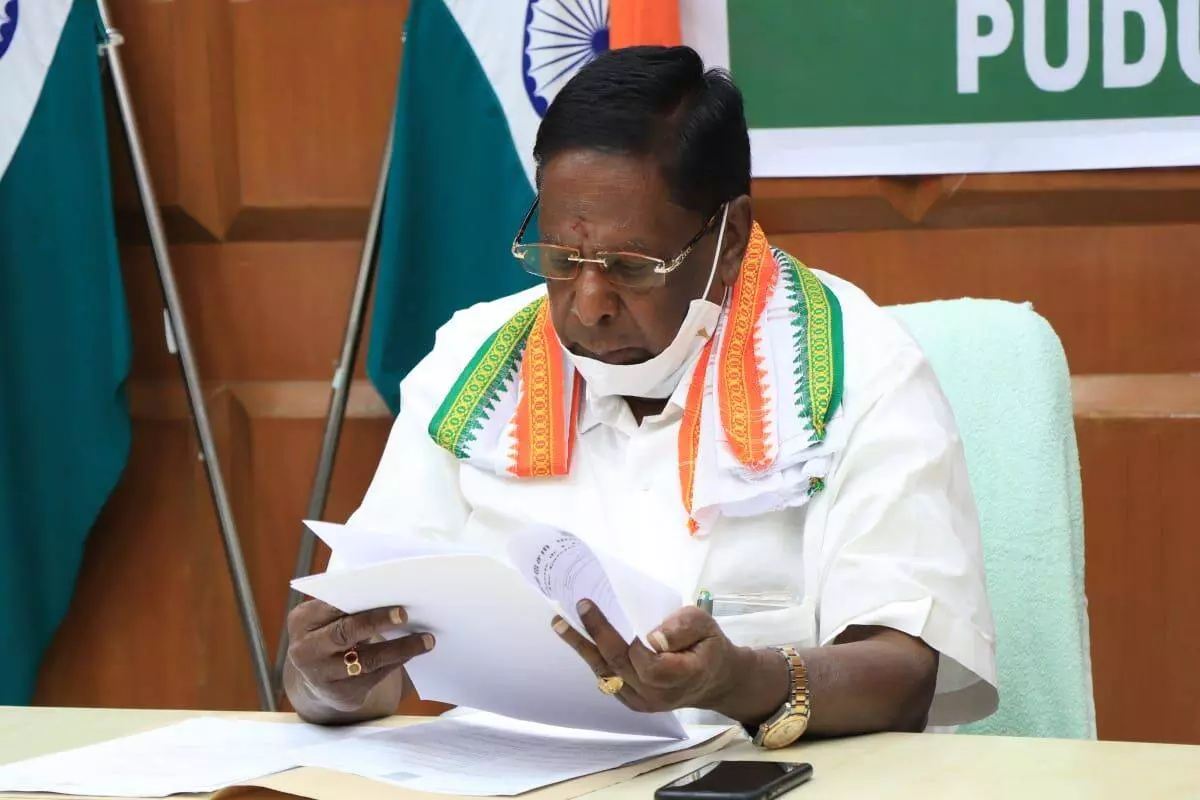
The Puducherry formula of saffronisation
text_fieldsPuducherry chief minister V Narayanasamy (file photo)
The latest developments indicate that BJP's move to saffronise South India starting with Puducherry is inching closer to victory. BJP's national leadership is striving to not just make a mark but win a majority in this small union territory with an assembly of 30 seats. The BJP is realistic that it cannot reach the level of forming a government either in Tamil Nadu or Kerala where polls are set to happen in April and May. Their plan now is to weaken the Congress and capture power in the small union territory. The BJP is now striving to realise convenor J P Nadda's claims of winning over 23 of the 30 seats. Operation Kamala is BJP's ploy of bringing over fortune-seeking leaders from parties with no clear political stances, or idealistic convictions - a formula that has already worked well for them at the national level. The efforts made by the BJP realising that Puducherry would be the ripe ground for this tried and tested operation did not prove disappointing, as they managed to reduce the V Narayanasamy government into a minority.
The BJP is a party that has not been able to get a presence in the 30-member assembly. In the 2016 election, the Congress won 15 seats. Together with DMK's three and an independent, the ruling front thus had 19 members. On the opposition side, with seven members of the All-India N Ramgasamy Congress and four of AIADMK, the alliance had a strength of eleven. According to the Union Territories Act of 1963, the central government can nominate three members. Although that is a discretionary power of the Centre, the precedent has been to seek the view of the state cabinet too, inline with the federal traditions followed by the country. But since the BJP is not bothered by any such conventions or courtesies, the Centre selected three persons from its own leaders. Those three nominated members are the current capital of the BJP in Puducherry assembly. And when it transpires that what happens in Puducherry assembly is a game with these three individual players, one can gauge the political awareness and culture of the party ruling the Centre.
The Congress had already been on the boil since last July with the disqualification of MLA N Dhanavelu, following his difference of opinion with the chief minister V Narayanasamy. It did not take long for the BJP to enter the fray to widen the schism within the Congress and to bag in as many as possible from the Congress with Operation Lotus. On January 25, A Namassivayam and E Theepainthan arrived at BJP headquarters in New Delhi and declared their defection. And with a third, Malladi Krishna Rao resigning his assembly membership on February 15, the ministry entered the zone of crisis. Soon thereafter another MLA, John Kumar resigned bringing the ruling alliance's strength down to 14 and thus it is face to face with the Opposition. As it happened in other states, the excuse the defecting Congress members gave for jumping sides is the inefficiency of leadership. They cite factors including the failure in getting full statehood for the union territory. But then questions like what the state got from the BJP in subjects that fell clearly under the Centre's jurisdiction, despite its getting a second term, seem to have neither answers nor relevance now.























